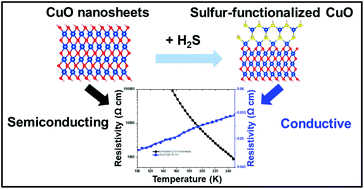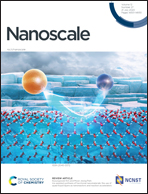Semiconductor-to-conductor transition in 2D copper(ii) oxide nanosheets through surface sulfur-functionalization†
Abstract
Functionalization is a widely-used strategy to modulate and optimize the properties of materials towards various applications, including sensing, catalysis, and energy generation. While the influence of sulfur-functionalization of carbon materials and oxides like ZnO and TiO2 has been studied, far less research has been devoted to analyzing sulfur-functionalization of CuO and other transition metal oxide nanomaterials. Here, we report sulfur-functionalization of copper(II) oxide nanosheets synthesized by using a soft-templating procedure, with sulfur-addition based on hydrogen sulfide gas as a source. The resulting sulfur-functionalization does not change the overall crystal structure and morphology of the CuO nanosheets, but leads to a decrease in surface hydroxyl groups. Sulfur induces a semiconductor-to-conductor state transition of the CuO nanosheets, which is supported by computational modeling. The metallic transition results from shifting of the Fermi level into the valence band due to formation of Cu–S bonds on the surface of the CuO nanosheets.



 Please wait while we load your content...
Please wait while we load your content...